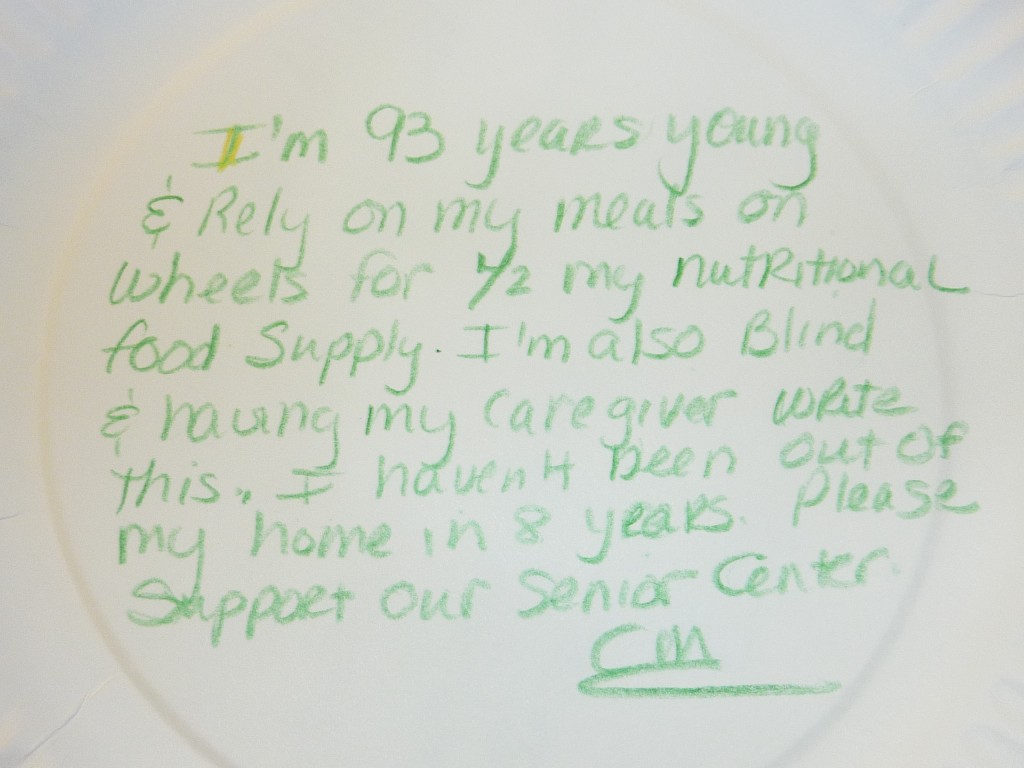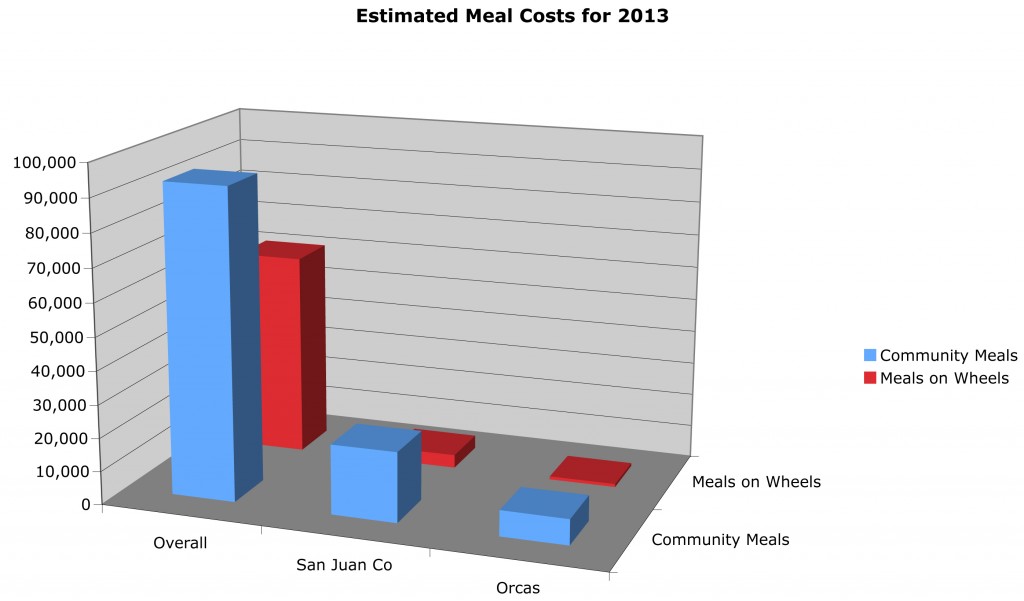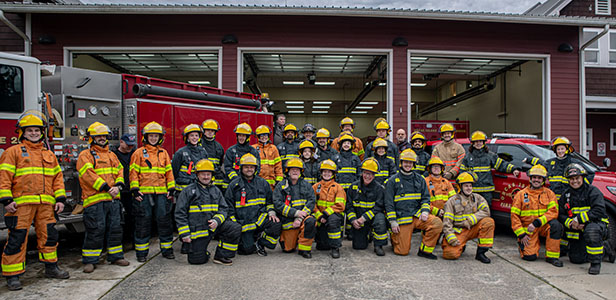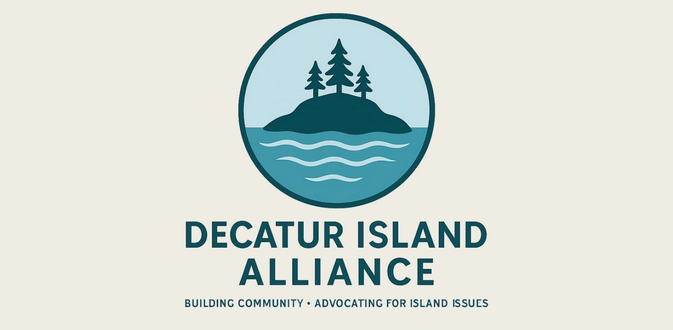— by Lin McNulty —

Over 100 paper plates with personal, handwritten messages by Whatcom and San Juan seniors were recently sent to Senator Patty Murray in support of restoring federal funding cut by the Sequester to Meals on Wheels and Senior Community Meals. They stressed not only the nutritional value provided by the meals, but the social aspect of the program as well.
One day in hospital costs more than providing a year of home delivered “Meals on Wheels.” Julie Meyers Whatcom-San Juan Senior Nutrition Program Director, who is also a registered dietitian, says, “People don’t realize how important nutrition is for maintaining the health of seniors.” A program of the Whatcom Council on Aging (WCOA), a 501(c)3 nonprofit organization, the W/ SJ Senior Nutrition Program includes both Meals on Wheels and Senior Community Meals served throughout San Juan and Whatcom Counties.
The Northwest Regional Council (NWRC) has been overseeing the Whatcom-San Juan, Skagit, and Island county senior nutrition programs for over 30 years. Due to the small size of San Juan County the NWRC contracts the administration of its Senior Nutrition Program under one contract with Whatcom County’s program.
An advisory committee from each island comes together to form non-profit the Senior Services Council, partnering with Marla Johns of the Orcas Senior Center and with Joyce Rupp, San Juan Health and Community Services manager.
Meals on Wheels (MOW) currently provides home meal delivery to between five to ten Orcas islanders each week, and that number is growing. The meals are intended to maintain and/or improve the health status of older persons and support their independence. Liquid supplements are also available to those who need them.
MOW is staffed by volunteer drivers who get to know their clients. They become, in effect, a monitor of the health status of the client. Normally, one meal a day is delivered unless it is determined that a specific client requires more.
Meals on Orcas, whether home-delivered or at the Senior Center, are prepared locally. Local cook, Jay Savell is hired by the WCOA Senior Nutrition Program. Meyers notes that the cost-per-meal for the Whatcom/ San Juan Program is more cost-effective than either Island or Skagit counties.
Between 60-80+ people take part in the twice-weekly (Tuesdays and Fridays at noon) Senior Lunches at our local Senior Center, with a suggested donation of $5 per meal; however meals are provided to adults 60 and over regardless of ability to pay.
 The Whatcom-San Juan Senior Nutrition Program has seen a $35,000 cut in funding during 2013 that is mostly Sequester-related. At the same time, the cost of meals has gone up.
The Whatcom-San Juan Senior Nutrition Program has seen a $35,000 cut in funding during 2013 that is mostly Sequester-related. At the same time, the cost of meals has gone up.
The current status of the program is that they are running a deficit, and their reserves won’t last long at the current level. Federal funding through the Older Americans Act covers only 36 percent of program expenses. Participant meal donations cover another 27 percent of overall program expenses. However, in San Juan County meal donations are higher and cover approximately 46 percent of Nutrition Program expenses in the islands. The WCOA must seek additional grants, donations, and funding from local governments to completely fund the program. While Whatcom County government currently provides $10,000 per year, there is no funding from San Juan County.
Although meal donations in the San Juans are high, there is a pro-rated federal funding shortfall of $33,000 for the islands in 2013.
“By the end of 2014, we will definitely be looking at reduced meal service if our funding situation does not improve. We look at what we can cut that will do least harm,” says Meyers. “Nothing looks good.” Cutting service in San Juan County, she stresses, “would be last resort.”
The Nutrition Program will be ramping up fundraising efforts in the spring, with a hopeful outlook of eventually expanding services in San Juan County. “We are looking to balance our budget and have the community kick in—not just participants,” says Meyers. Orcas Senior Center Advisory Committee recently stepped up to help fund the program with an $8,000 contribution.
“Our goal is to keep seniors healthy and independent, adds Meyers “States putting money into nutrition have fewer people needing long-term care.”
**If you are reading theOrcasonian for free, thank your fellow islanders. If you would like to support theOrcasonian CLICK HERE to set your modestly-priced, voluntary subscription. Otherwise, no worries; we’re happy to share with you.**







